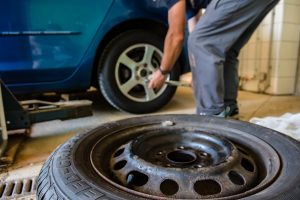 Do you have a car that’s more than 3 years old? Well, it needs an annual MOT test to determine whether or not it’s roadworthy. If the car doesn’t meet the requirements of this test, repair is necessary to meet the industry standards. Most of these checks are quite basic. Therefore, if you don’t know about cars, you can easily perform a pre-MOT check to reduce the chance of failing. Here is what you need to do, and while you’re giving your car a general health check look into giving it some other TLC too like an air conditioning service reading.
Do you have a car that’s more than 3 years old? Well, it needs an annual MOT test to determine whether or not it’s roadworthy. If the car doesn’t meet the requirements of this test, repair is necessary to meet the industry standards. Most of these checks are quite basic. Therefore, if you don’t know about cars, you can easily perform a pre-MOT check to reduce the chance of failing. Here is what you need to do, and while you’re giving your car a general health check look into giving it some other TLC too like an air conditioning service reading.
1. General Tests
Here are some of the general tests you need to perform on your car before the MOT test. Start by turning on the ignition and check the following:
• Is the horn working?
• Are the windscreen wipers and washers working?
• Is the screen wash topped up?
• Are there any missing chunks or loose strips on the windscreen wipers, especially on the wiping edges? If yes, you need to check for replacements from vehicle spare parts retailers and refit them accordingly.
• Are the seat belts working properly? Are they cut or frayed? Are the mountings secure? Are the belts free from any damage? Do they engage or disengage as required? Try pulling sharply on the belt to see whether or not the inertia reel locks.
2. Tyre Check
You need to walk around your vehicle to inspect the tyres. Here are some of the things you need to inspect.
• Are there any cuts or bulges on the sidewalls? Are there any objects stuck in the tread?
• Make sure the tread is at least 1.6mm deep. Use a tread depth gauge to confirm the same. Alternatively, you can use the rim of a 20 pence coin by putting it in the grooves that run around the tire. If the rim around the edge of the coin stands comfortably, you need to replace your tyres.
• Does each tyre match the opposite one for construction type and axle size?
• Is the spare tyre roadworthy and legal for use?
3. Lights Check
Lights are very susceptible to failure of the MOT test. Some of the things you need to check include the following:
• Are all the exterior bulbs working as required?
• Are there any cracks or damage in the lenses of each light?
• Finally, you need to check the headlights (both main beam and dimmed) as well as the rear side and front lights. Don’t forget the reversing lights, stop lights, fog lights (both front and rear), the indicator lights and finally the number plate lights.
4. The Bodywork
Make sure your vehicle’s bodywork doesn’t have sharp edges that might injure pedestrians. The bumpers should be secure. The car should be accessible through all doors and can be opened from the inside and outside comfortably.
5. Brakes
If you don’t have specialist equipment, here are some things to check on the brakes.
• Open the bonnet and check whether the brake fluid level is between the ‘min’ and ‘max’ indicators. Check the car’s handbook if you don’t know where to find it.
• Pull the handbrake. If you have to pull it too high with a lot of clicking, the cable needs to be adjusted. If you can release the handbrake by simply tapping on the lever, you need to tighten it.
6. The Steering Wheel
It should be tight on the column. If there are any abnormal movements, there could be wear that needs to be replaced immediately.
Check for any knocks when turning the steering wheel, or any excessive whining from the power steering pump since they are signs of worn out components.
7. Shock Absorbers
There shouldn’t be any leaks or notable differences in absorbing pressure. Try bouncing each corner of your vehicle. It should be able to go down when under pressure and rise up to full height before settling down. If there are any worn out dampers, you should notice excessive bouncing.
8. Windscreen and Mirrors
Check if there are any cracks or chips in the area swept by the wipers? Any damage in this area shouldn’t be larger than 10mm in diameter.
Are the mirrors fixed securely and is the glass in a good condition?
9. The Exhaust System
It should be secure without any corrosion.
Try revving the engine when the car is stationary with the doors open and the parking brake on. If there are any rattles or unusual noises, it’s a sign that the exhaust system is damaged. If there is any smoke coming out of your car, you will fail the emissions test.